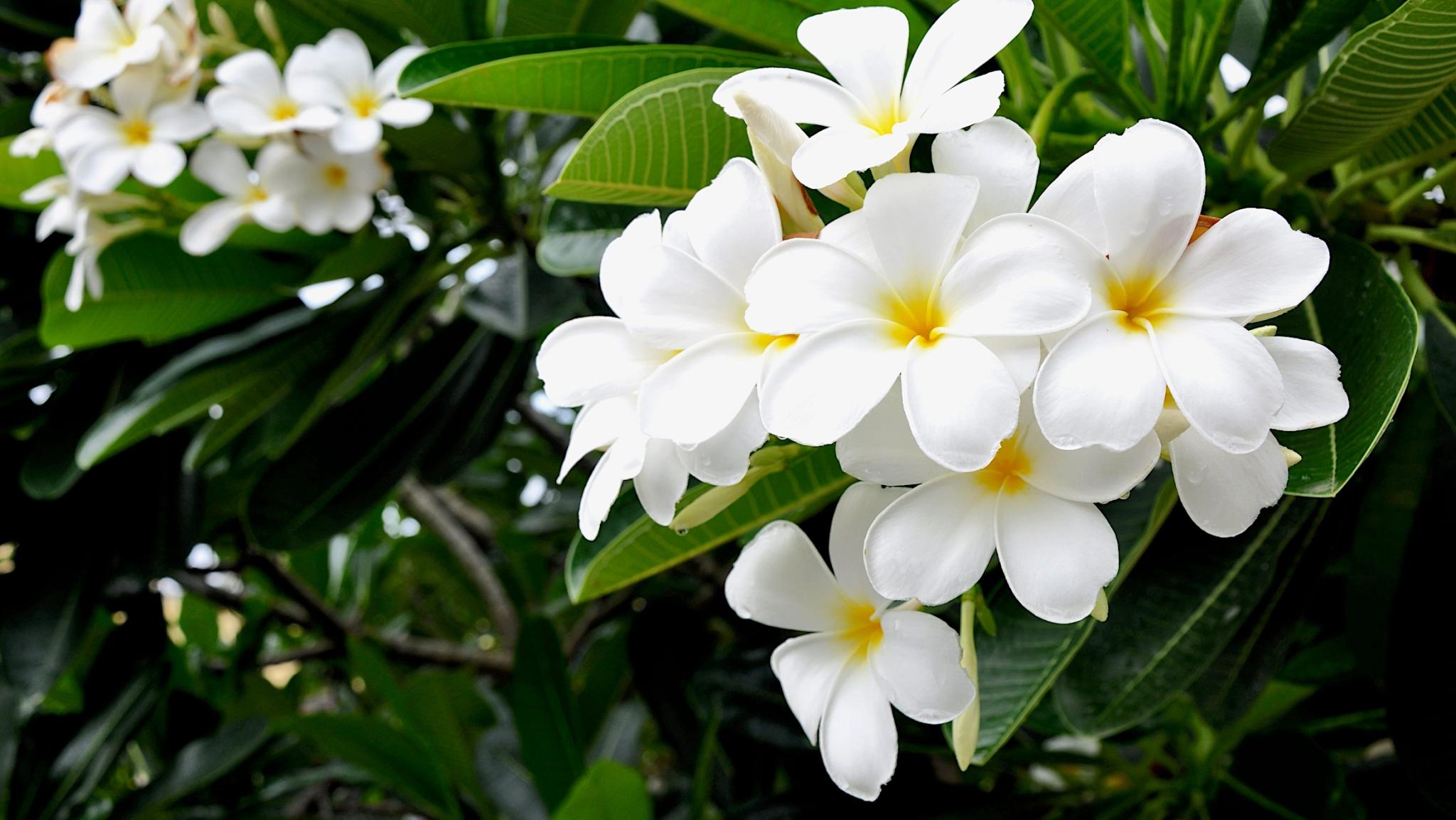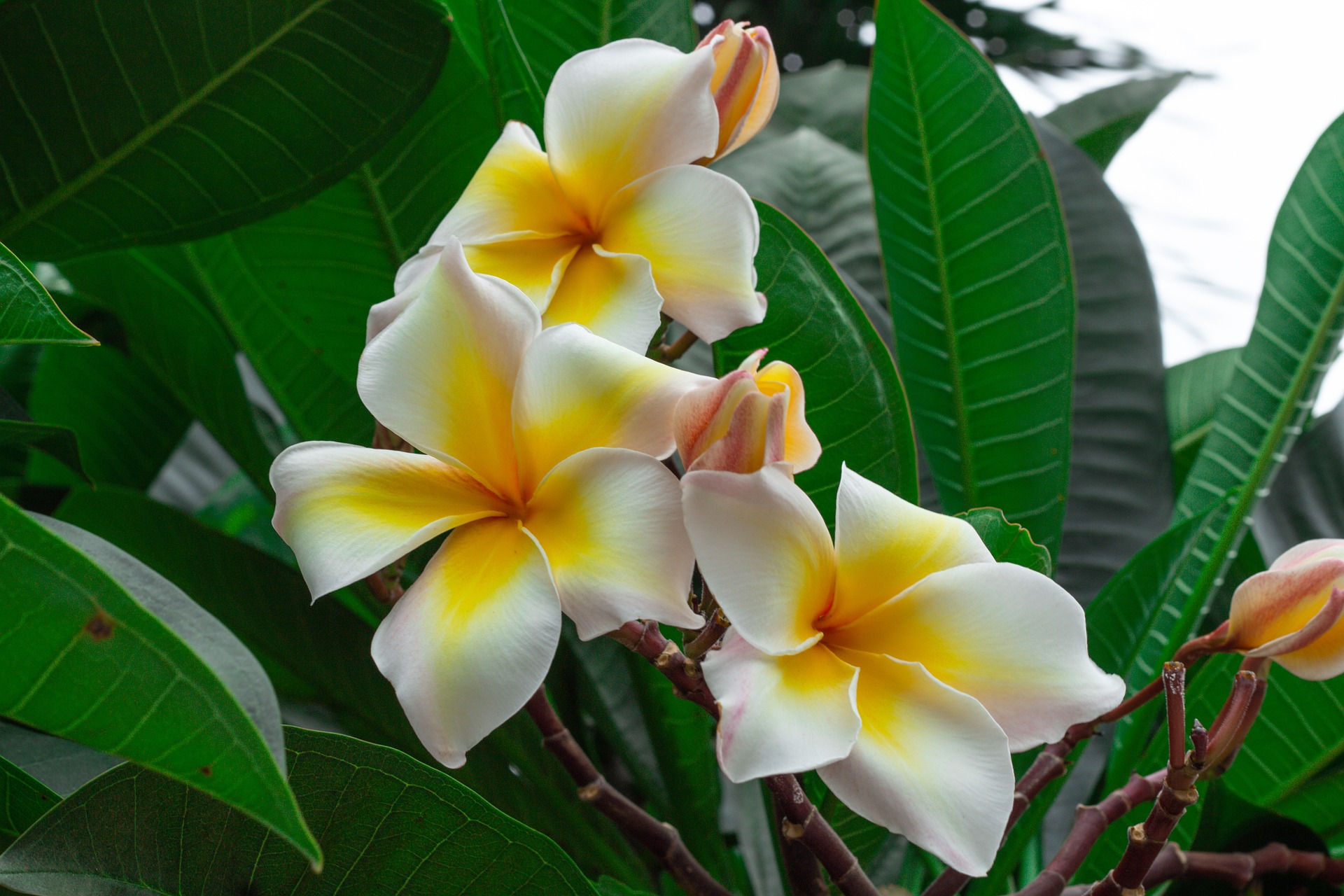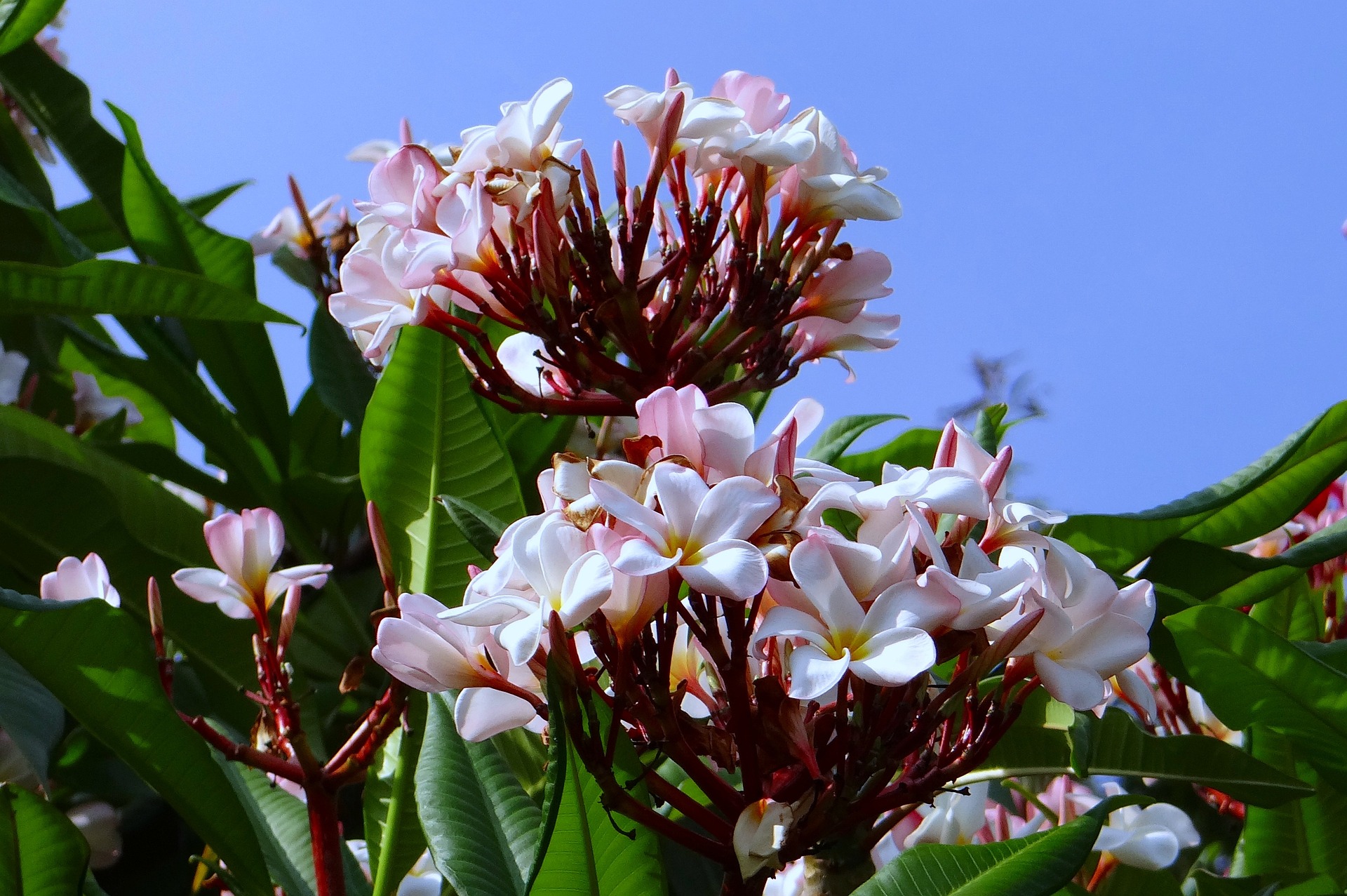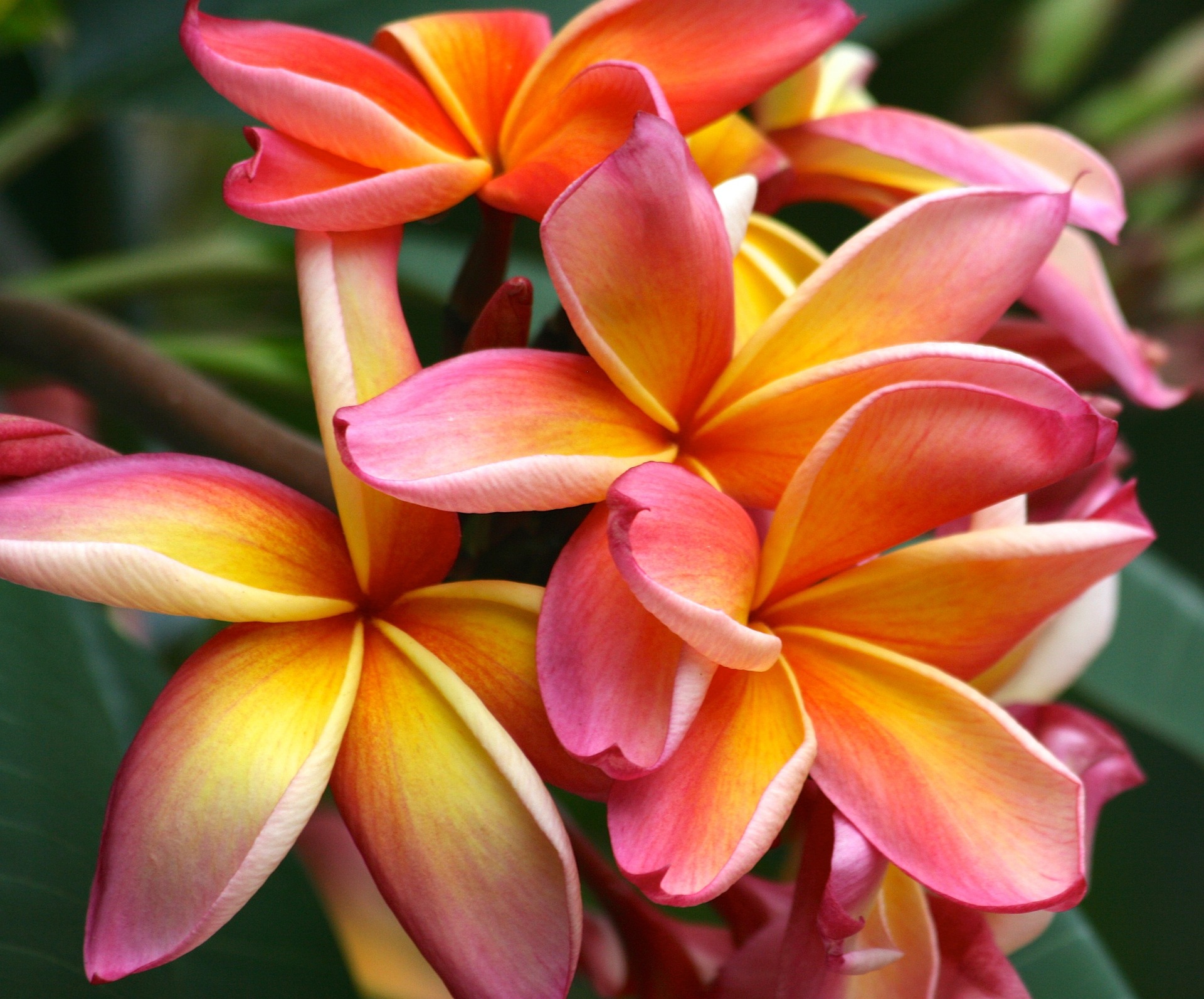
Also receive the Almanac Daily newsletter including gardening tips, weather, astronomical events, and more.
Planting, Growing, and Pruning Plumerias
ADVERTISEMENT
Just hit by Hurricane Milton; outdoor large Plumieris really took a hit! Almost all leaves are gone. What do I do now to save my trees?
I want to plant a small 5 ft plumeria pudica in a large pot next to my balcony. How can I keep it from growing too large? The current height is just about perfect
Sounds like a great addition to your outdoor space. To keep it to the size you would like, you should prune your plumeria in very early spring to maintain the desired height and shape. If you are diligent about yearly pruning, you won’t need to put your plant through a drastic prune, which could affect growth during that season.
And as for planting, make sure you use the right size container to give your plumeria’s roots room to grow, but at the same time isn’t too large. You will also want to use a well-draining potting mix. See above for more tips for planting.
Hope this helps!
My plumeria is tall with flowers only on tips (in container) how do I encourage more branches? I had it in the ground at one time and it did. Not do well now in the LG pot it's much happier but a bit scraggly looking.
Main stem of plant is 3 ft. Tall with 2 branches full of leaves, originally.
Had 3 I died during dormant season last year was first year it bloomed. Also is beginning to get a. White sun Stan
Usually flowers at the tips is a sign that the plant lacks sunlight, which is why it’s reaching up to find more light. Also, do you have a big enough pot? Plumeria need large pots to encourage optimal growth. Finally, encourage branching by making a shallow perpendicular cut above the branch at the first leaf node. Hope this is helpful.
How can you revive a completely broken limb of the plant?
Hi Cynthia,
If it’s a recent break, you could try to graft the branch back on, or try and root the broken branch. Either way, you’ll want to neaten up the branch’s jagged edge if it has one before using rooting hormone. You should also attend to the scar on the mother plant.
P. alba might be evergreen in Cuba or P.R. but it is most definitely deciduous in Florida.
Are Plumeria toxic to cats?













